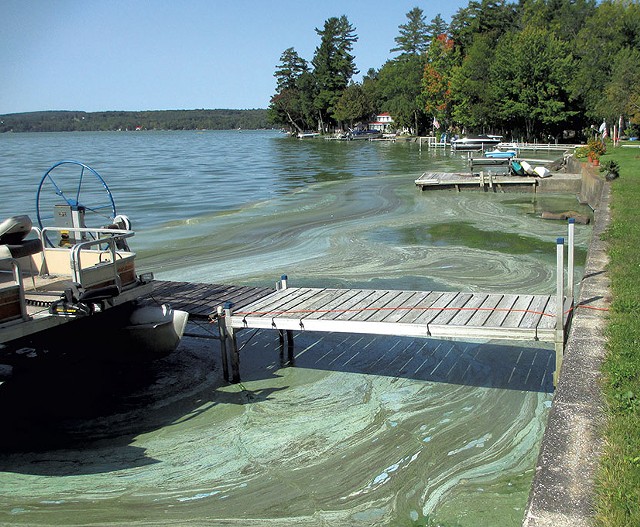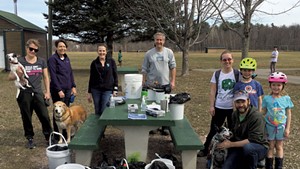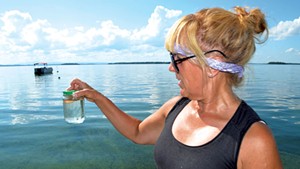
- File: Courtesy Of Dick Benton
- Blue-green algae on the shores of Lake Carmi in 2017
An adult dog and a puppy died from blue-green algae poisoning last month after drinking from a private pond, according to state officials.
Their deaths are the first officially linked to cyanobacteria in Vermont since two dog-poisoning incidents on Lake Champlain in 1999 and 2000
spurred the creation of a water-monitoring program.
The recent incident occurred in mid-June on private land.
Angela Shambaugh, an aquatic biologist who coordinates cyanobacteria monitoring for the Vermont Department of Environmental Conservation, declined to specify the pond's location because the dog owners who reported the poisoning requested privacy.
Water samples and autopsies commissioned by the dog owners recently confirmed that the pets, both "small-breed" dogs, were poisoned by neurotoxins produced by algae blooms, she said.
Most algae blooms are harmless, but cyanobacteria can produce toxins that are harmful or fatal if ingested in high enough quantities.
"It's really very rare that there are such serious outcomes after exposure," Shambaugh said.
Children and dogs are more susceptible because of their smaller size. Dogs might ingest contaminated water either by drinking it or licking wet fur.
Neurotoxins can quickly kill small pets. "It was a very rapid thing," Shambaugh said of the recent deaths.
Weather conditions this summer "have been good for cyanobacteria," she said. Algae blooms on Lake Champlain briefly closed three Burlington city beaches last week, but the Vermont Department of Health has not received any recent reports of human illness, spokesperson Ben Truman said.
“The best way to protect yourself is to know what a bloom looks like, and to stay out of the water when one is present,” Bridget O’Brien, a radiological and toxicological analyst with the Department of Health, said in a
July 2 department-issued press release. “Blooms are usually green or blue-green and can make the water look like pea soup or spilled paint, but they can be other colors and consistencies too.”
Even if the water looks clear, it's best to check the
state's online tracker to see if cyanobacteria was recently reported in that area, Shambaugh said.
The monitoring system does not publicly post information about water conditions on privately owned land.














Comments (3)
Showing 1-3 of 3
Comments are closed.
From 2014-2020, Seven Days allowed readers to comment on all stories posted on our website. While we've appreciated the suggestions and insights, right now Seven Days is prioritizing our core mission — producing high-quality, responsible local journalism — over moderating online debates between readers.
To criticize, correct or praise our reporting, please send us a letter to the editor or send us a tip. We’ll check it out and report the results.
Online comments may return when we have better tech tools for managing them. Thanks for reading.